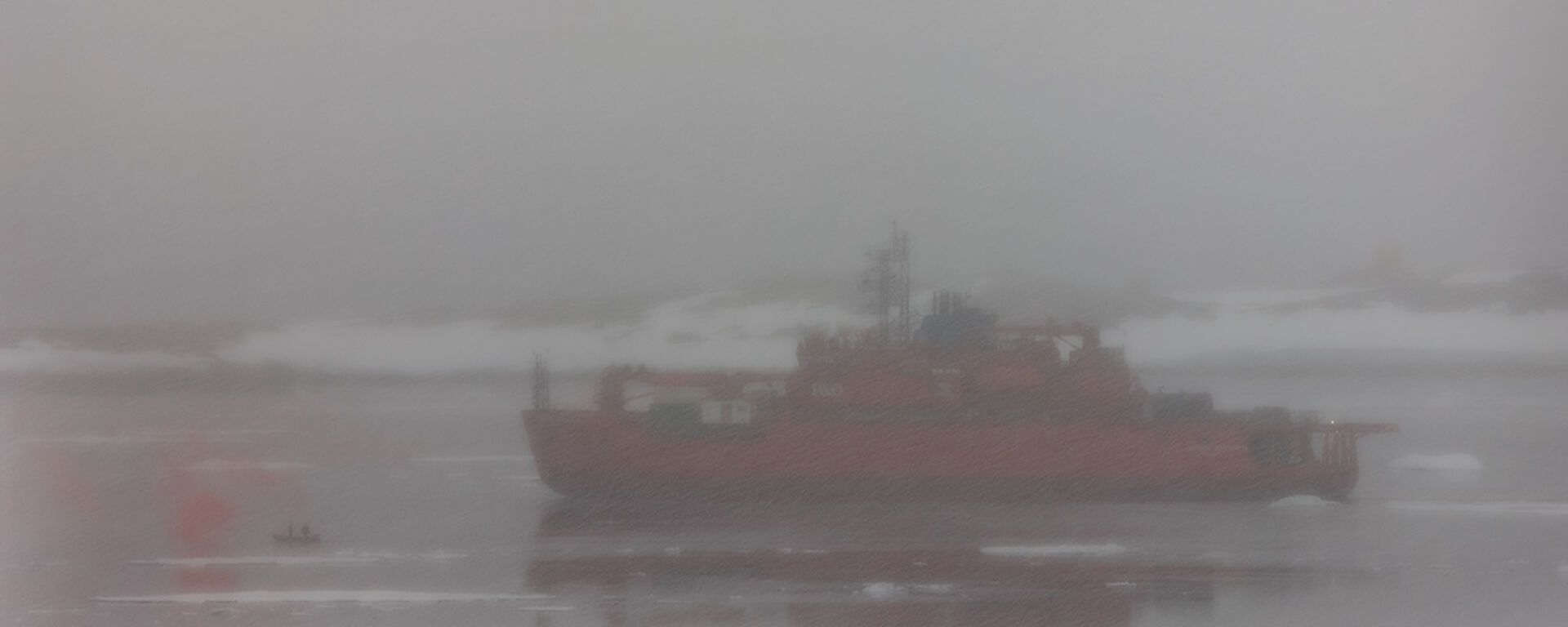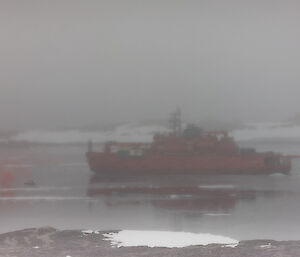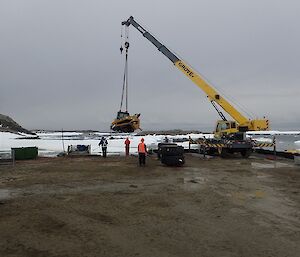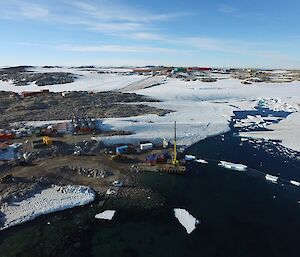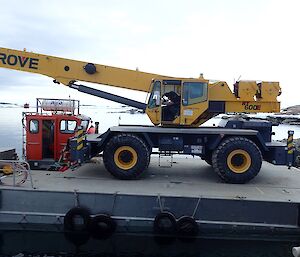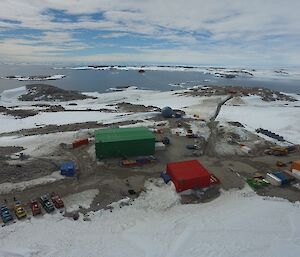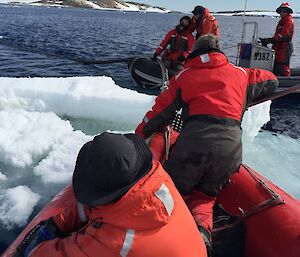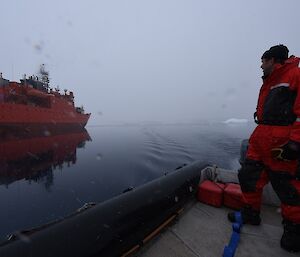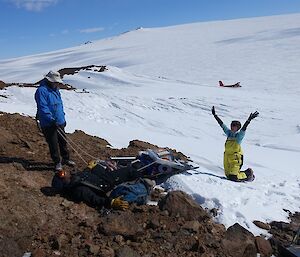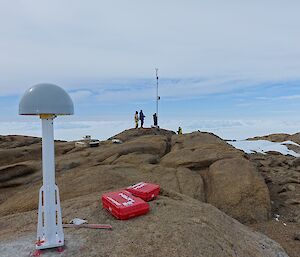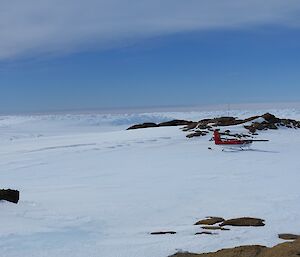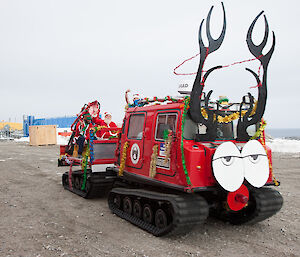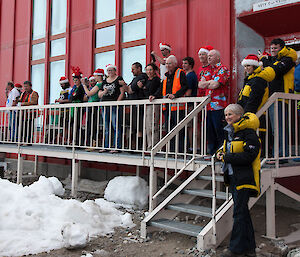This week’s news is brought to you by Steve W, Operations Coordinator at Casey.
It’s been three weeks since our last confession, and much has happened since! Our focus over the last few weeks has been the delivery of the station’s annual resupply. This year saw the Aurora Australis arrive on Friday 18 December for a total of 13 days, before departing on 31 December. During this period the ship delivered 172 lifts at a combined weight of approximately 520 tonnes, pumped ashore 935,000 litres of diesel fuel, and left after loading 34 lifts of cargo and waste weighing in at approximately 161 tonnes.
One of the difficulties of not having a wharf large enough to berth the Aurora Australis is the need to unload over water using barges to move cargo between the ship and shore. This difficulty is magnified by the delivery of the fuel, which is pumped ashore in a hose with simple floats between the ship and the connection point on shore. This needs two to three days of 24 hour monitoring to clear floating ice and prevent the hose from being damaged or ruptured.
This resupply and visit by the Aurora Australis marked the end of many years of service to the Australian Antarctic Division with the retirement of one of Aurora Australis’s Captains, Capt. Murray (Muz) Doyle. This voyage was to be his last to Antarctica. As a way of celebrating his years of service, he was farewelled with an escort as he pulled anchor and headed out of Newcomb Bay for his last time.
The morning of departure from Newcomb Bay was shrouded in mist and snow.
Amid the tumult of resupply, the station continued to support science programs both on station and in the field. One of Casey’s priority programs is looking at East Antarctica’s contribution to present day sea level change, estimated to vary from +30 to −109 gigatonnes of melt water per year, a range that is equivalent to more than ten percent of the global mean rate of sea level change. This variation is largely due to technique-specific systematic errors most notably due to glacial isostatic adjustment (GIA): the solid earth’s response to past ice-ocean loading changes. One of the largest disagreements in East Antarctic GIA is within the Casey-Davis sector, where predictions of present-day bedrock motion for the same location vary between uplift of four millimetres per year and subsidence of one millimetre per year. To achieve this, GPS/seismometer instruments are being deployed between Casey and Davis by a small team of people who fly out to remote field locations and install the equipment.
One of the interesting round trip projects this resupply was the use of a remotely piloted aircraft (RPA) or drone to undertake sea ice reconnaissance during the voyage. While on station during resupply, the drone was flown to look at various capabilities which gave us some very unique perspectives on resupply.

